Competition is always good for the consumer.
Thanks to healthy competition, almost 200 years ago Muscovites got clean and tidy bakeries with bread that was always fresh.
From the end of the 1700s to the 1820s, the bakery trade in Moscow was entirely in the hands of Russian bakers. They were mainly peasants from Moscow and Kaluga provinces, as well as natives of Tver and Yaroslavl. The authors of the 1889 review “Bread Baking Trade and Bread Tax in Moscow” divided them into four main groups according to their place of birth: From Khatun (Moscow province), Pratva (a river in Kaluga province), Kalyazin and Uglich in Tver and Yaroslavl provinces respectively.
By the 1820s the specialty of each of these groups of bread makers was set: natives of the village of Khatun, Kalyazin and Uglich baked mainly white and fine rye bread and cookies, while natives of the Tarusa district (on the Pratva river) baked mainly rye bread, kalachi, baranki (ring-shaped rolls) and saiki (dinner rolls).
By the end of the 19th century almost all bakeries had their own shops to sell their bread. But until the 1820s bread was sold almost exclusively by delivery to consumers. It was usually baked at night, and in the very early morning the breadman went around the neighborhood with a basket, delivering bread directly to households.
After the Great Fire of 1812, the devastated city began to rapidly rebuild and grow. During this period the demand for bread skyrocketed and bread makers couldn’t meet it. There was a boom in bakeries, and the very nature of the bread trade began to change. In addition to regular consumers, there were many new customers who had just arrived in Moscow and hadn’t set up their households. They came to the bakers, who sold them bread out of their bakery windows.
At that time breadmaking facilities had no sales rooms in them or nearby. Bakeries were built mostly near the entries to cities or on back streets. White and rye bread were sold under tents scattered throughout the city markets, as well as in other central parts of the city on private lands.
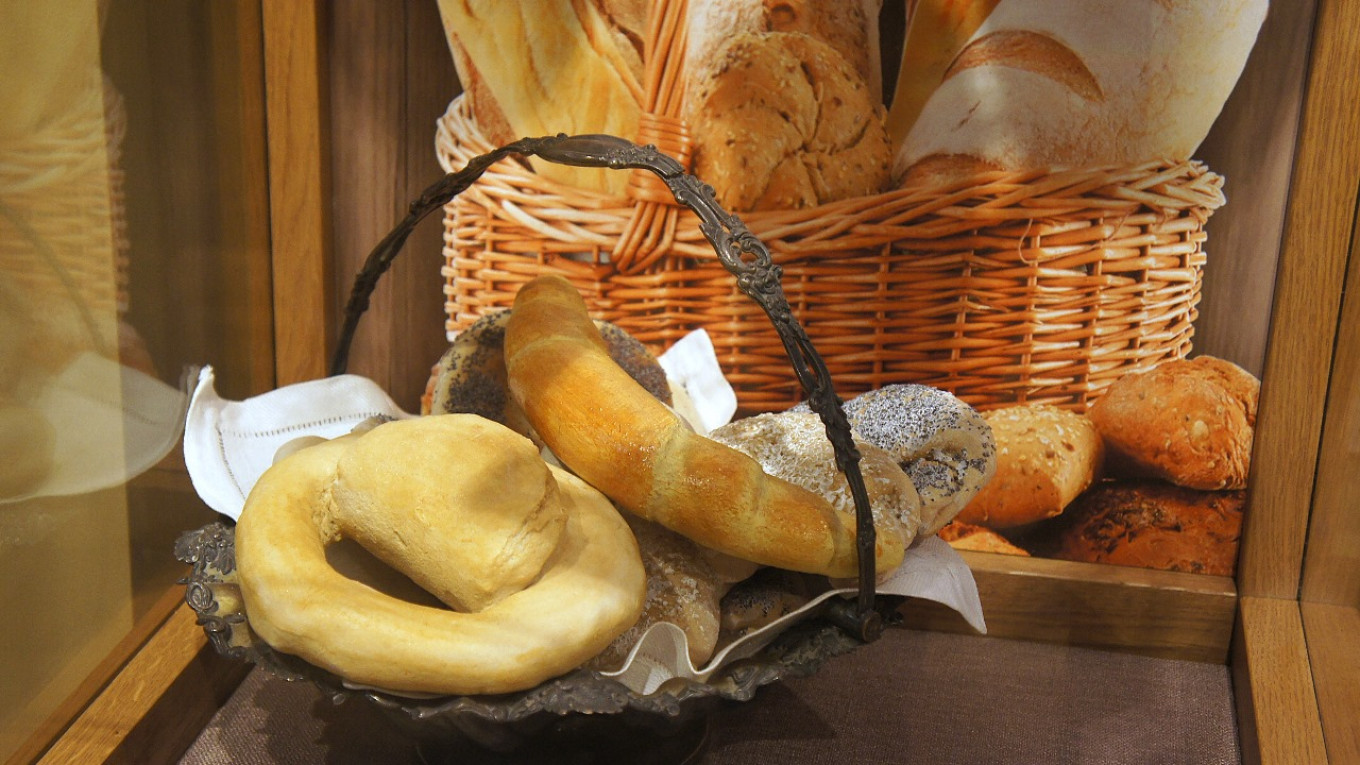
As the population grew, the demand for baked bread grew, too. The authorities supported the trade. Private owners charged a very small fee to sell baked goods on their properties, and the city even allowed free trade in the squares. As a result, bread tents were set up in many places, and some bread makers had more than a dozen of them.
Starting in the early 1820s, the profitability of the trade began to attract many foreign bakers to Moscow — mostly Germans. Weber’s, Peters’, Schubert’s, Kohlberg’s and Gelzer’s bakeries were just some of the bread shops that were set up shop the way they were at home. German bakeries were located mainly in the central parts of the city and on the main streets. They had clean stores on their premises where consumers could always get fresh, well-baked bread. This significantly changed the very character of the bread trade in the city. Over the next 30 years the number of foreign bread makers grew, and by the mid-1840s there were almost more of them than Russian bakers.
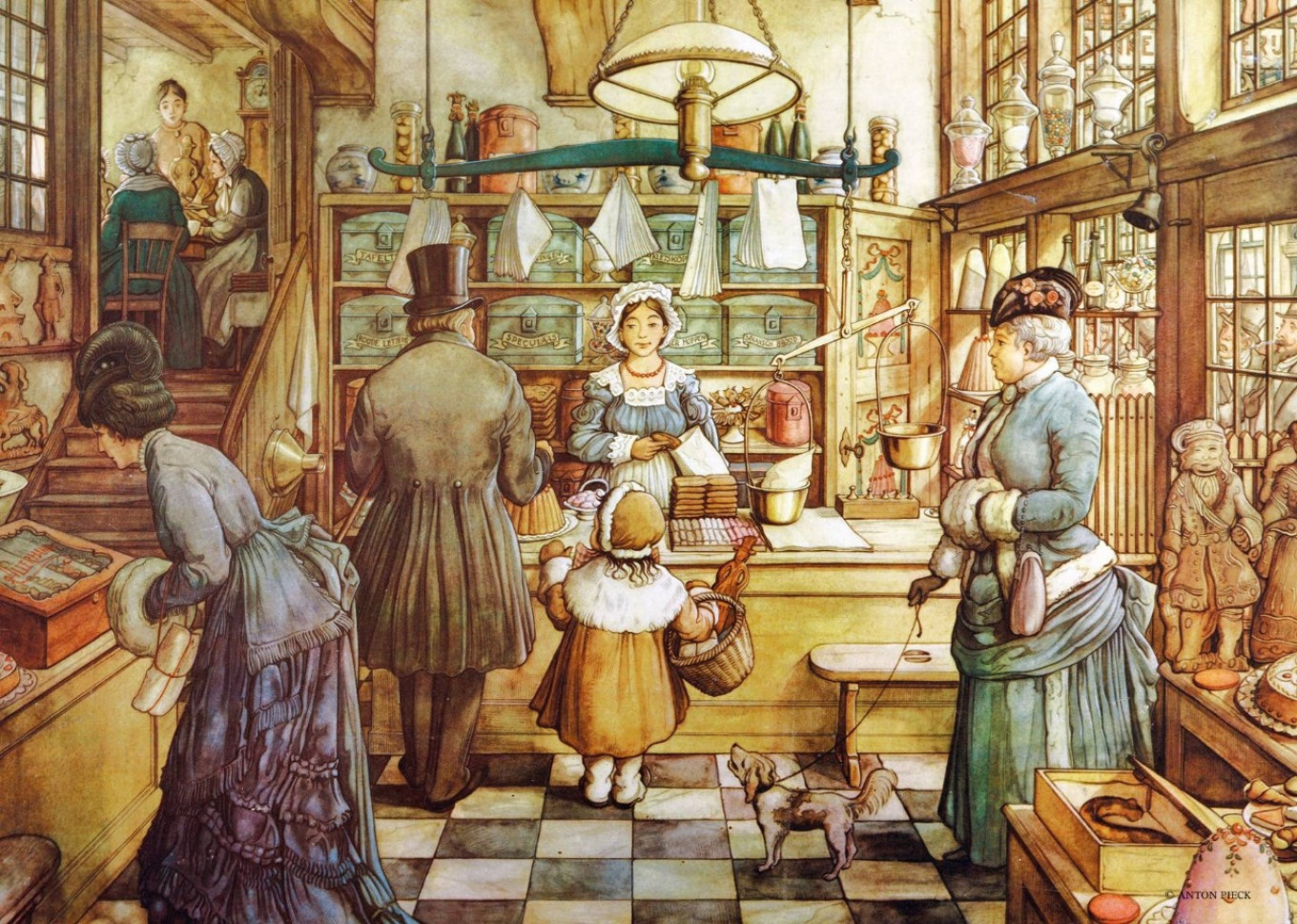
Russian bakers were at first distrustful of German ideas, but when they realized that well-baked and fresh bread from clean German bakeries appealed to consumers, they began to adopt German methods. Russian bakeries with stores appeared on the main streets. They began to bake bread that was as good as the bread baked by the Germans in the city, and they baked it twice a day so that they could always sell fresh and delicious bread.

A group of bread makers from the village of Khatun were especially eager to adopt the German bakery methods and quickly mastered it. But the main hero of this period of struggle between Russian and German bakeries was Ivan Filippov. In the early 1850s Filippov’s great success in the bakery business even attracted the attention of the Emperor. In 1855 he was granted the title of Baker to the Court.
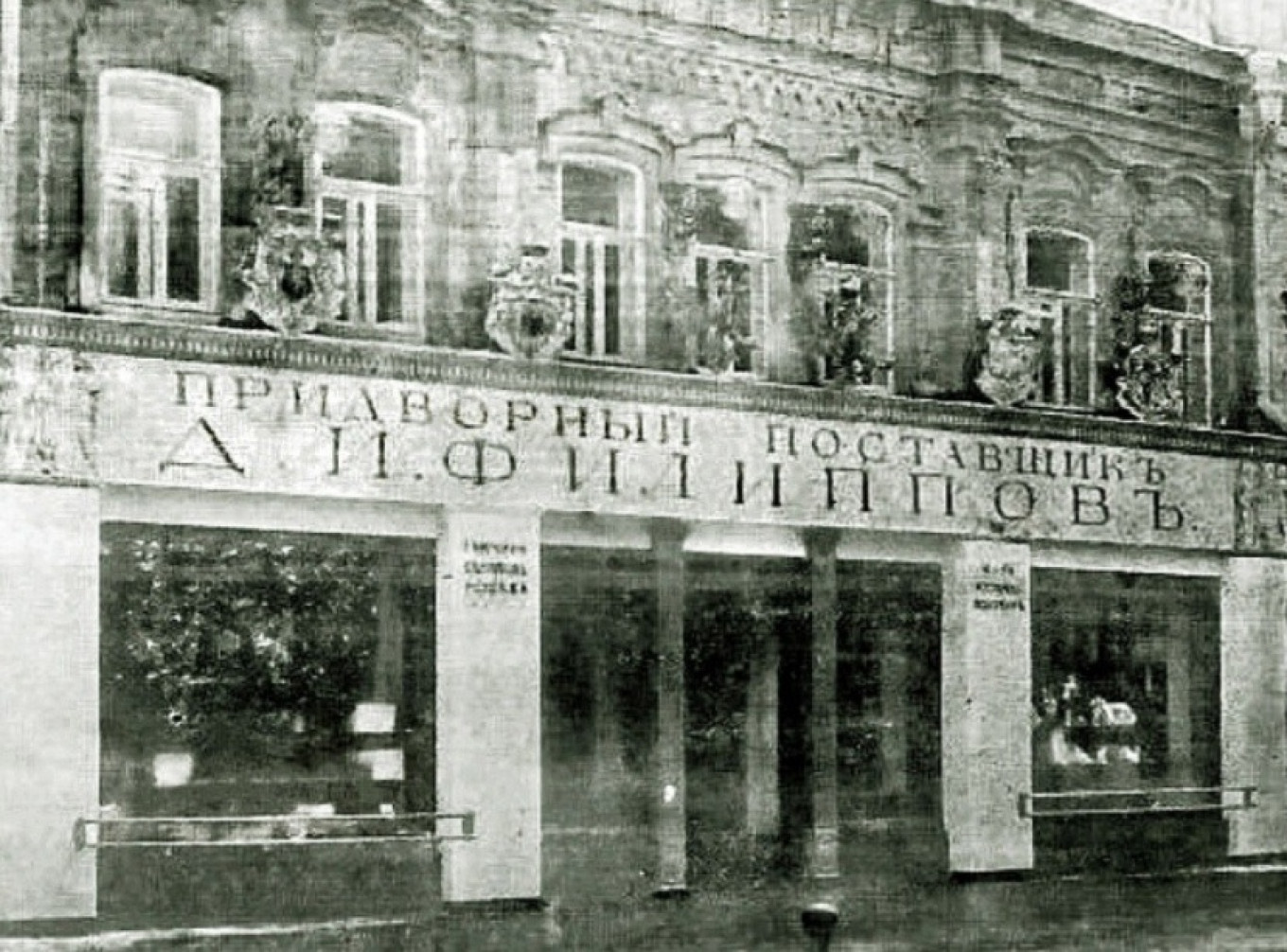
In the 1850-60s Ivan Filippov’s bakeries on Sretenka, Tverskaya and Pyatnitskaya streets in Moscow offered customers many varieties of bread made of the highest quality flour and beautifully baked. Filippov’s delicious kalachi were famous throughout Russia. Filippov was followed by other Russian bread makers who tried to bake bread that was a good as what the Germans baked, and in general to please consumers and sell bread rolls and loaves more cheaply than German bakeries.
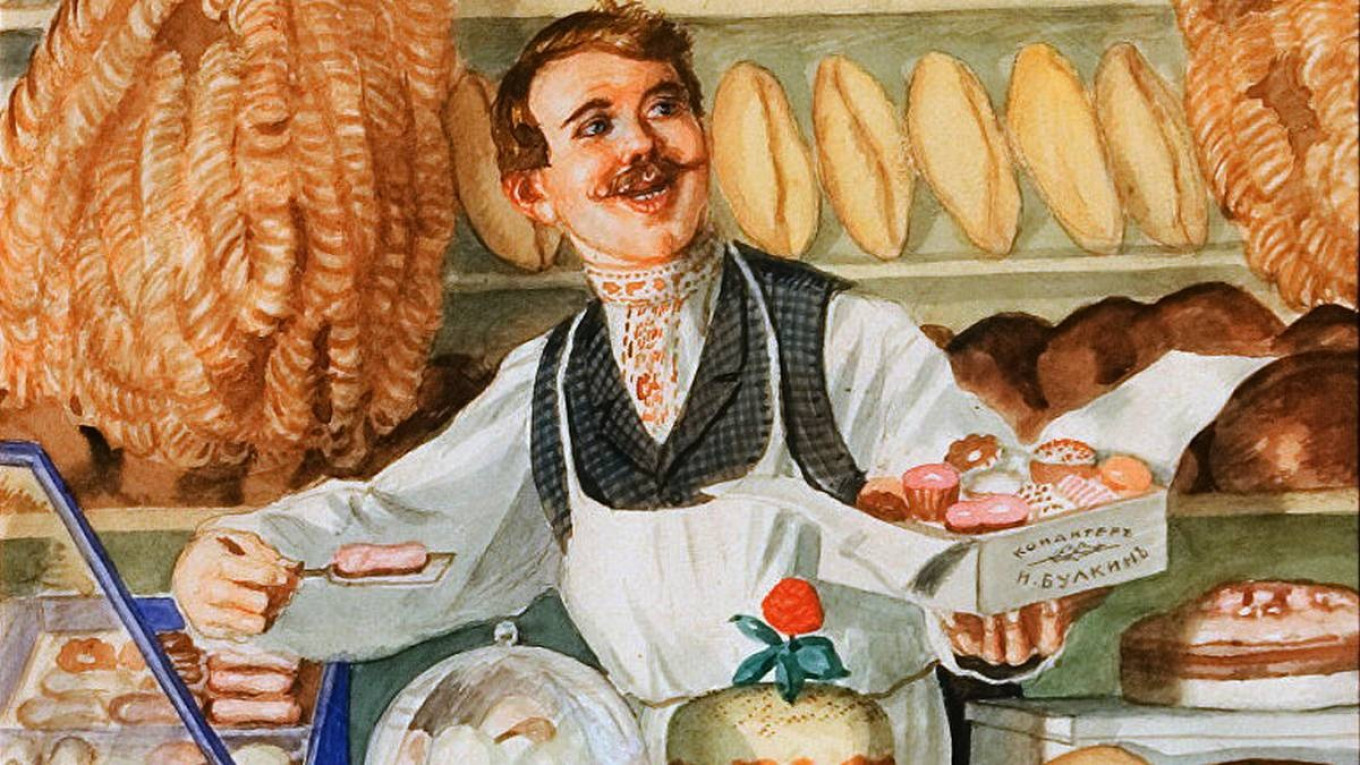
In the 1860s, Russian bakeries already greatly outnumbered foreigner bakeries. Germans, unable to withstand the competition with the domestic bread makers, began to close up their businesses one by one, moving to provincial cities or going abroad. From that time on — almost right up the 1917 Revolution — Russian bakeries dominated in Moscow, almost without competition. For example, in March 1888, out of 364 bakeries 347 belonged to Russian Orthodox or Old Believers, 12 to Jews, and only 5 bakeries were run by Lutherans.
At the time people said that Russians took over the Moscow bakery scene because Russian bakers had more modest demands than their German counterparts. Russian bakers were satisfied with smaller profits during periods of strong competition with foreigners.
Today we’d like to share the recipe for a wonderful and simple Russian baked treat called хворость, from the Russian word for twig. In English they are sometimes called Russian Twig Cookies. They have many names in Europe, and in the US they are usually called Angel Wings. Unlike eclairs and cakes, they cost practically nothing. But they give as much pleasure as the most exquisite desserts.
Russian Twig Cookies
Ingredients
- 420 g (14.8 g or 3 ½ c) flour
- 250 g (1 c + 2 tsp) kefir
- 1 egg
- 1 g (¼ tsp) citric acid
- 5 g (1 scant tsp) salt
- 30 g (2 Tbsp) soft butter
- 1 (8-10 g) packet vanilla sugar or 1-2 tsp vanilla extract
- 1 tsp baking soda
- 30 g (2 Tbsp + 2 tsp) sugar
- Confectioner’s (powdered) sugar
- vegetable oil for frying
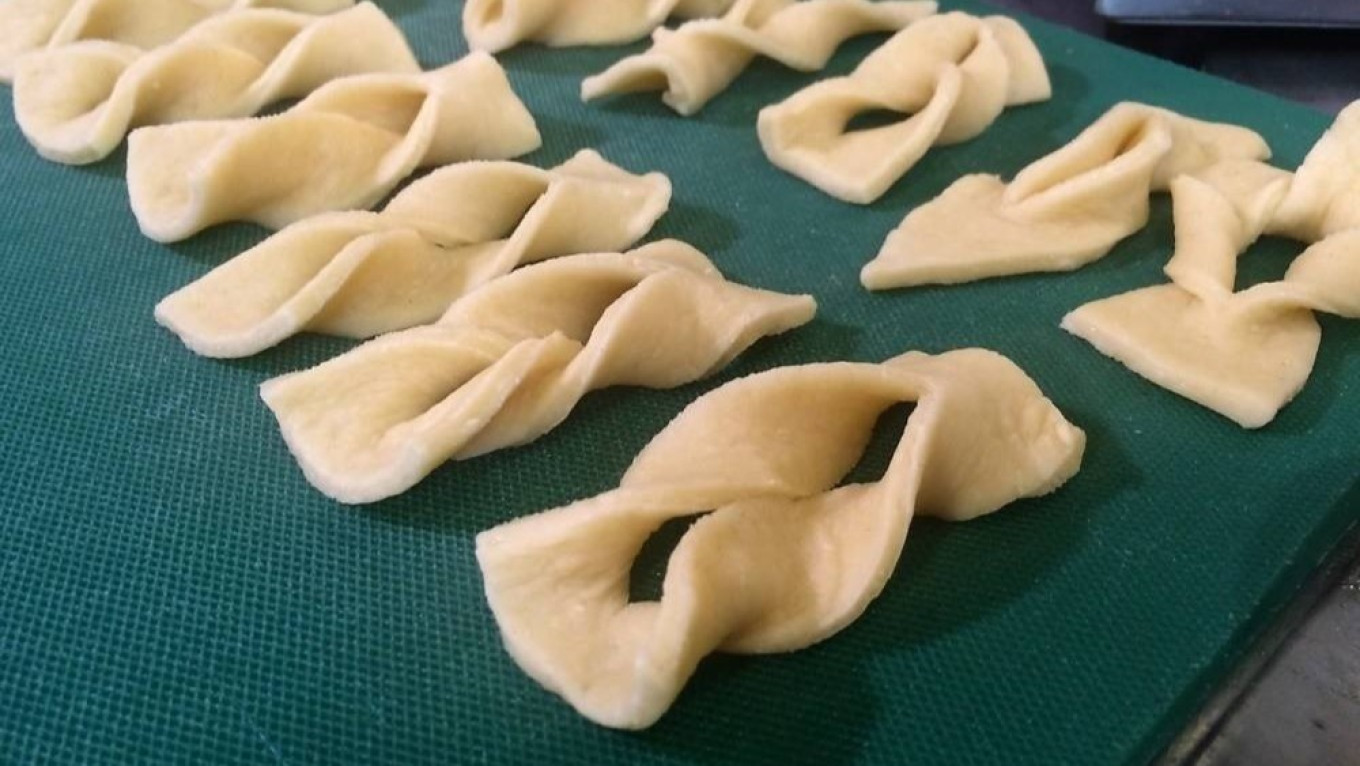
Instructions
- Put kefir, citric acid, salt, sugar, vanilla sugar and egg in a mixer bowl on the counter and whisk until smooth.
- Add the flour, baking soda and butter; attach the hook to the mixer, put the bowl on the mixer stand and knead with the hook until smooth.
- Take off the stand, cover the dough and leave for 30 minutes to allow the gluten to form.
- Take the dough out of the bowl, roll it out to a thickness of ½ cm (about ¼ inch), cut into strips of about 10×5 cm (about 4×2 inches). In the center of each strip make a slit that does not reach the edges, and then pull one side of the strip through the slit (see photo above to check your folded dough).
- Place the folded strips in hot oil. Fry until golden and place on paper towels to drain.
- Sprinkle with powdered sugar and serve with tea.
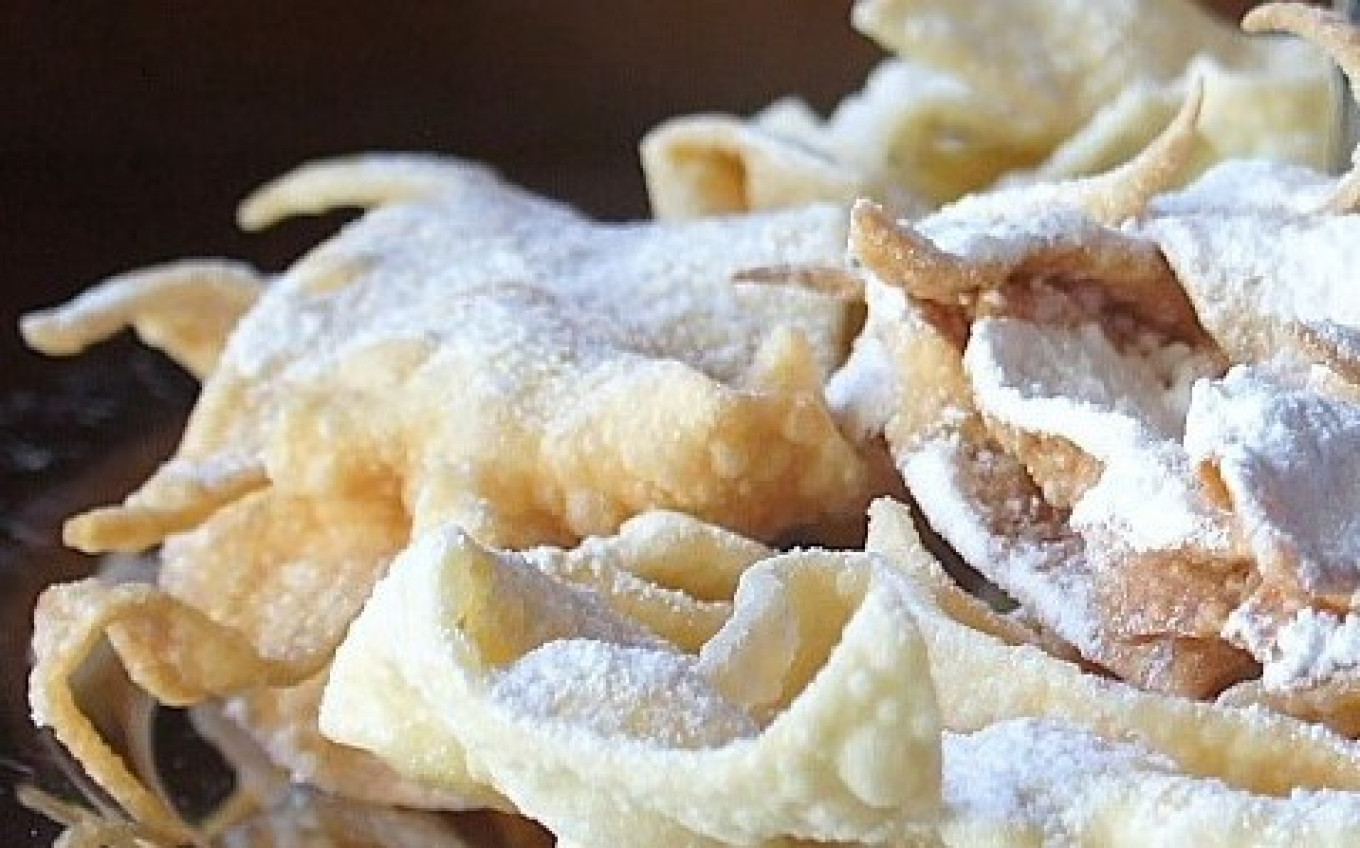
A Message from The Moscow Times:
Dear readers,
We are facing unprecedented challenges. Russia’s Prosecutor General’s Office has designated The Moscow Times as an “undesirable” organization, criminalizing our work and putting our staff at risk of prosecution. This follows our earlier unjust labeling as a “foreign agent.”
These actions are direct attempts to silence independent journalism in Russia. The authorities claim our work “discredits the decisions of the Russian leadership.” We see things differently: we strive to provide accurate, unbiased reporting on Russia.
We, the journalists of The Moscow Times, refuse to be silenced. But to continue our work, we need your help.
Your support, no matter how small, makes a world of difference. If you can, please support us monthly starting from just $2. It’s quick to set up, and every contribution makes a significant impact.
By supporting The Moscow Times, you’re defending open, independent journalism in the face of repression. Thank you for standing with us.
Once
Monthly
Annual
Continue

Not ready to support today?
Remind me later.
×
Remind me next month
Thank you! Your reminder is set.





